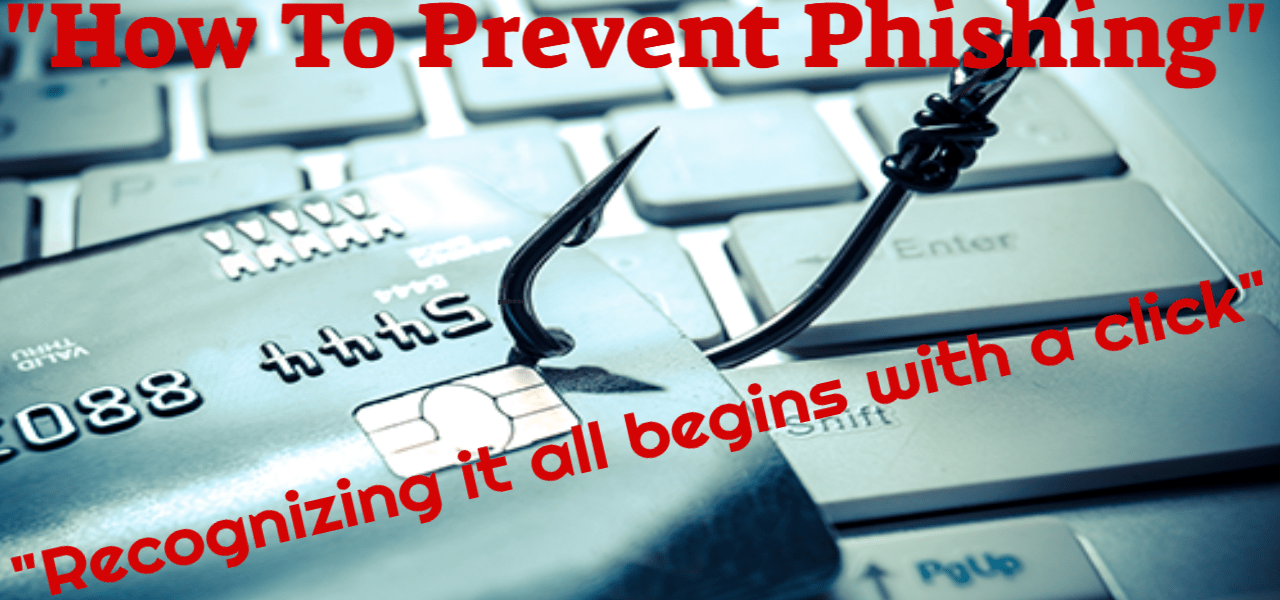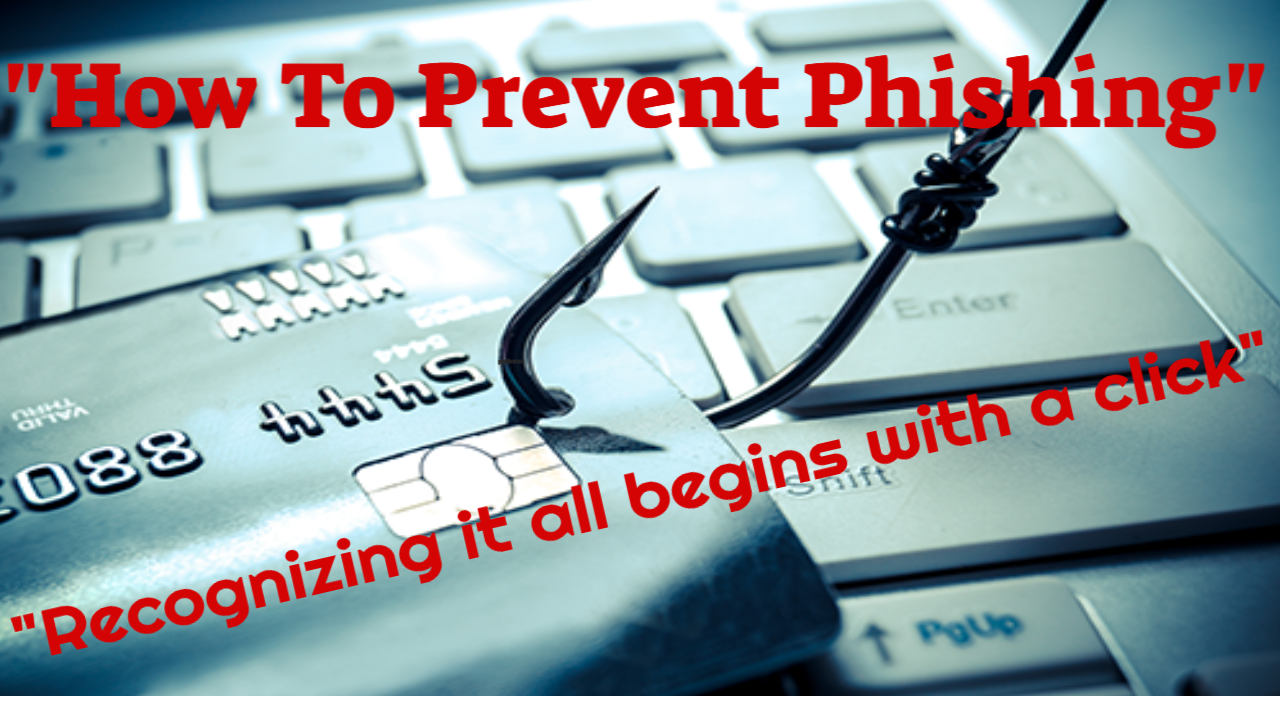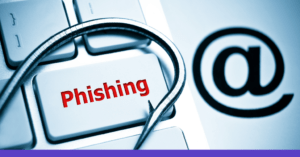
How To Prevent Phishing – Acknowledging That It All Begins with a Click
What is Phishing and How the Scam Works
Let’s define what phishing is and how it works in general before we go into how to prevent phishing.
A phishing scam is a variety of fraud that can come in various shapes and sizes. These scams employ a variety of online tactics, such as phishing emails and pop-up ads, as well as phone calls. The perpetrators of these frauds typically use scare tactics to get their victims to take the bait.
Phishing is an online con game in which phishers are tech-savvy con artists and identity thieves. They use spam, bogus websites, email messages, and instant chats to trick people into divulging sensitive information. To name a few, phishers are after banking information, credit card accounts, usernames, and passwords.
Phishing is a common variety of cybercrime. Phishing is one type of social engineering assault. An individual’s identity is stolen by obtaining login details and other non-public information via email, such as credit card numbers.
The element of surprise, which comes in the form of emails, is one of the most striking elements of phishing. The victim typically receives these emails at an inconvenient time. Scammers are well aware that it’s impossible to pay attention to unusual emails all of the time.
Phishing attacks accounted for 32.35 percent of total cyberattacks in the preceding year, according to the FBI Cybercrime Annual Report for 2021, with 241,342 phishing attacks.
With 19,465 attacks in 2015, this report had the highest number of attacks in the last five years.
Resultingly, you must learn how to prevent phishing emails and how to prevent phishing in general.
The 10 Most Common Vintage Phishing Examples
Here’s a collection of vintage phishing scams we’ve encountered over the years.
As you can see, hackers use a wide range of techniques, which are constantly evolving. While having a complete library of these samples would be practically impossible, staying current on what’s out there to remain current on ‘how to prevent phishing’ is a good idea.
1. Email Phishing Scams
An email phishing scam is a phony email message that looks to be from a person or company with which the victim is familiar. It makes an unauthorized attempt to gain the recipient’s personal and/or financial information.
A phishing communication usually contains at least one link to a phony website that appears to be that of a reputable company. The letter encourages the recipient to reveal personal information that could be used for identity theft or financial crime online.
In their contact, phishers have been found to spoof authentic company logos. They also use forged email addresses that appear to be the same as the actual company’s address. On the other hand, the address could be misspelled or come from a bogus domain.
2. Scams Based on Vishing
The audio version of email phishing is vishing (also known as voice phishing or VoIP phishing). It’s a phone scam in which victims are tricked or intimidated into providing critical financial or personal information to crooks. Although the letter “V” stands for voice, the method remains the same.
Vishing works by convincing victims that replying to the caller’s request is the correct thing to do. The caller typically pretends to be from a government agency, the IRS, the police, or the victim’s banking institution.
Cybercriminals utilize threats and persuasion to convince victims that they have no option but to provide the desired information.

How-To-Prevent-Phishing-Recognizing-it-all-begins-with-a-click
3. Phishing on Mobile Devices (Smishing)
A phishing SMS, social media message, voice mail, or other in-app communication asks the recipient to update their account information, change their password, or notify them that their account has been hijacked.
The message contains a link that may be used to steal personal information from the victim or infect the mobile device with malware.
4. Scams Involving Cold Calls From Tech Support
Scams involving tech support cold calls occur when a fraudster telephones a potential victim posing as a representative of a reputable security company.
They lie and claim to have found malware on the victim’s machine after convincing the user to install remote desktop software. This access enables the attacker to gain control of the device and install malware.
These fraudsters will usually demand payment to “fix” the problem in addition to attempting to install malware on the laptop.
5. Scams Using Pop-up Warnings
A pop-up appears when a person is browsing the web and discovers a little graphic or advertising on their screen.
Pop-ups are typically related to the content being seen and connected to another website that offers equivalent content or commodities. Malicious pop-ups may be highly bothersome, rendering the user unable to close the pop-up window.
These pop-ups may display a message saying that the system is infected with malware and offering a phone number for help in removing the virus.
Cybercriminals regularly use pop-ups that look to be from a legitimate source.
6. Scams Involving Phony Search Results
Fraudulent firms sometimes use sponsored search adverts for their “help services,” disguising themselves as trustworthy, well-known companies.
These sponsored listings can appear at the top of a search results page, which is a desirable location. These findings, which may look legitimate, may offer support promises that are overly believable to be true in the hopes of drawing in a victim whose primary concern is repairing their equipment.
Unfortunately, if you click on the ad, malware may begin to download to your device, risking the security of your data and increasing the operational problem with your computer.
7. Delivery Via the Web
One of the most advanced phishing techniques is web-based delivery.
The hacker, often known as the “man-in-the-middle,” is the person who sits between the original website and the phishing system. Between a genuine website and a user transaction, the phisher collects information. As the user continues to transmit data, the phishers amass it without their knowledge.
8. How To Prevent Phishing – Don’t Be Duped by Fake Websites

Cybercriminals send phishing emails that contain links to fraudulent websites, such as a known mail provider’s mobile account login page, and ask the victim to enter their credentials or other information into the interface of the false site.
As a deceptive measure, the rogue website may commonly use a minor change to a well-known URL, such as mail.update.yahoo.com instead of mail.yahoo.com.
9. Malware
It only takes one click on an email attachment to install harmful malware on a computer or network. These files look authentic, and they may be disguised as amusing cat videos, eBook PDFs, or animated GIFs.
10. “Evil Twin” Wi-Fi
When free Wi-Fi access points are faked, this is known as ‘evil twin’ Wi-Fi. Victims unintentionally connect to the wrong Wi-Fi hotspot. To carry out the spoof, Wi-Fi access points in coffee shops, airports, hospitals, retail malls, public parks, and other public gathering areas are set up as faked access points by cybercriminals to steal data.
How to Prevent Phishing: Top Ten Crucial Points
Here’s a stat that will astound you. In 2021, phishing attacks increased by nearly 1,000%!
Phishing scams are among the most cyber attacks globally, and they are on the rise. The ugly reality is that fraudsters are always coming up with new methods to abuse our data. They’re also better than they’ve ever been.
The following are my top ten recommendations for ‘how to prevent phishing’:
1. Do Not Click That Link!
More sophisticated phishing attempts may approach you by name or pose as someone on the outskirts of your social network (for example, a friend of a friend), an authoritative person or organization (for example, the police, IRS, or FBI), or an institution known to send a large volume of correspondence (e.g., Google, Microsoft, or Netflix).
Whether the phishing attempt arrives in an email, a text message, or a phone call, the sender will nearly always ask you to click on a link or visit a website URL.
Do not click on a link or visit a website if the sender is unknown or the email looks out of character (i.e., your employer needs you to wire them funds asap, your next-door neighbor is in the hospital and needs you to visit the hospital webpage to fill in personal information, etc.).
If you suspect a phishing effort, don’t click that link – this is my first and most crucial tip for how to prevent phishing.
2. Never, Ever Share your Personal Information with Anyone.
Never communicate personal or financial information over the internet as a general rule. If in doubt, go to the company’s official website, look up their phone number, and give them a call.
The vast majority of phishing emails will direct you to pages requiring you to submit money or personal information. An Internet user should never submit sensitive information through links provided in emails.
Never transmit sensitive information to anybody through email. Make it a habit to double-check the website’s address. The URL of a secure website will always start with “HTTPS.”
3. Install a Browser-Based Anti-Phishing Toolbar.
The majority of approved web browsers allow you to install anti-phishing toolbars. Anti-phishing toolbars do rapid scans of websites you visit and compare them to lists of known phishing sites.
The toolbar will alert you if you visit a risky website. Anti-phishing toolbars give an extra layer of protection against phishing scams, and they are entirely free.
4. Check for HTTPS Security.
Websites that do not use an SSL/TSL certificate are not encrypted, similar to a public network. Because there is no certificate, hackers can steal information when you communicate with or engage with a website.
The final result potentially is the same: a hacker could use this to start a spear-phishing assault against you or the people in your life.
The URL of a secure website begins with “HTTPS” rather than “HTTP”. Depending on which browser you select, you may also see a padlock or the term “secure” to the left of the URL.
If you’re using Chrome, you may check the certificate’s status by clicking on the padlock, or you can study the site by hitting Ctrl + Shift + I and then browsing to the security section.
5. Check your Online Accounts Regularly.
If you don’t access your online account for a while, someone else may be having a field day with it. Even if it isn’t technically essential, regularly check in with each of your online accounts.
Make it a routine to update your passwords regularly. Check your statements frequently to protect yourself from bank phishing and credit card phishing scams.
Examine your bank statements regularly, carefully reviewing each item to ensure that no fraudulent transactions have happened without your knowledge.
6. Keep your Browser Up To Date at All Times.
Security updates for popular browsers are released regularly. They are made accessible in response to security weaknesses discovered and exploited by phishers and other hackers.
Download updates and install them as soon as they become available. Stop ignoring notifications to update your browsers.
7. Make Sure Firewalls are in Place
High-quality firewalls act as barriers between you, your computer, and outside intruders.
A desktop firewall and a network firewall are the two different available firewalls. The former is a type of software, whereas the latter is hardware. They dramatically reduce the possibility of hackers and phishers infiltrating your computer or network when used in combination.
8. Be Wary of Pop-Up Advertisements
Pop-up windows are commonly disguised as essential website components. However, all too often, they are phishing attempts. Pop-ups can be disabled in several major browsers and enabled on a case-by-case basis in others.
Don’t click the “cancel” button; such buttons commonly link to phishing websites. Instead, click the little “x” in the upper right corner of the window.
9. Protect your Online Privacy by Using a VPN.
Coffee shops, hotels, and other Wi-Fi hotspots, for example, have public networks that might pose a severe security risk.
Hackers accessing the same public Wi-Fi network can intercept data that is not otherwise safeguarded. The ideal answer for those who work from public Wi-Fi is to utilize a VPN to keep oneself secure on the internet.

A Virtual Private Network is a low-cost way to acquire privacy and security when browsing the web.
A VPN prevents your ISP or other third parties from viewing which websites you visit or the information you submit. A VPN masks your IP address by routing it through a specially configured remote server managed by the VPN host. As a result, when connecting to the internet using a VPN, the VPN server becomes your data source.
A VPN acts as a filter, converting all data sent and received into gibberish. Even if this information could be retrieved, it would be meaningless.
10. Commercial-Grade Antivirus Software Is Required
The added security and tranquility provided b upgrading from free antivirus software to a complete internet security solution are well worth the cost.
One of the most effective phishing prevention tactics is to enable business-grade antivirus software. Data that enters your computer over the internet is scanned by security software. When a potentially dangerous file is found, the program blocks it from being downloaded to your computer.
Commercial-grade security software evaluates profiles of known threats and malicious file types to determine which are potentially hazardous to your computer.
To keep current, security software often needs regular upgrades. When new threats are detected, their profiles are included in the update automatically. The supplier will install them automatically.
Follow these recommendations, and you will be on your way to navigating your online experience.
How To Prevent Phishing – Enterprise-level Web Protection from Sophos
Sophos Home Premium was founded by Sophos Limited, a British company specializing in digital security, and is my go-to for phishing avoidance.
Sophos Home is more than just an antivirus application. It protects you against the most modern and unexpected online threats, such as malware, adware, keyloggers, phishing scams, and phony websites.
Sophos Home protects you from known and unknown threats when you browse, bank, and buy online by delivering comprehensive ransomware protection for Macs and cutting-edge artificial intelligence for PCs for malware detection.
It safeguards your online experience by preventing hackers from exploiting flaws and techniques to steal your credentials and get access to sensitive personal information.
Sophos Home’s robust web protection guarantees that you do not become a victim of online fraud and that online threats do not compromise your PC or Mac.
Sophos Web Prevention provides exceptional web threat security and includes the following features:
• Real-time URL screening
• Scanning of downloaded content
• Verifying the reputation of downloaded data
Real-Time URL Filtering
Live URL filtering limits access to websites known to be infected with malware. This program operates by conducting a real-time search of Sophos’ online database of infected websites.
The occurrence is recorded in the scanning log when a malicious website’s access is denied.
Content Examination
Data and file examination, scan data and files retrieved from the internet (or intranet) in real-time and detect hazardous information. This tool examines content hosted everywhere, including locations not listed in the list of impacted websites.
Verification of Download
The age, source, prevalence, thorough content analysis, and other criteria contribute to the download reputation.
How can you prevent phishing? Click here for more information on Sophos enterprise-level web security for PCs and Macs.
The post, How To Prevent Phishing – Acknowledging That It All Begins with a Click first appeared on https://websecurityhome.com
Brought To You By:






